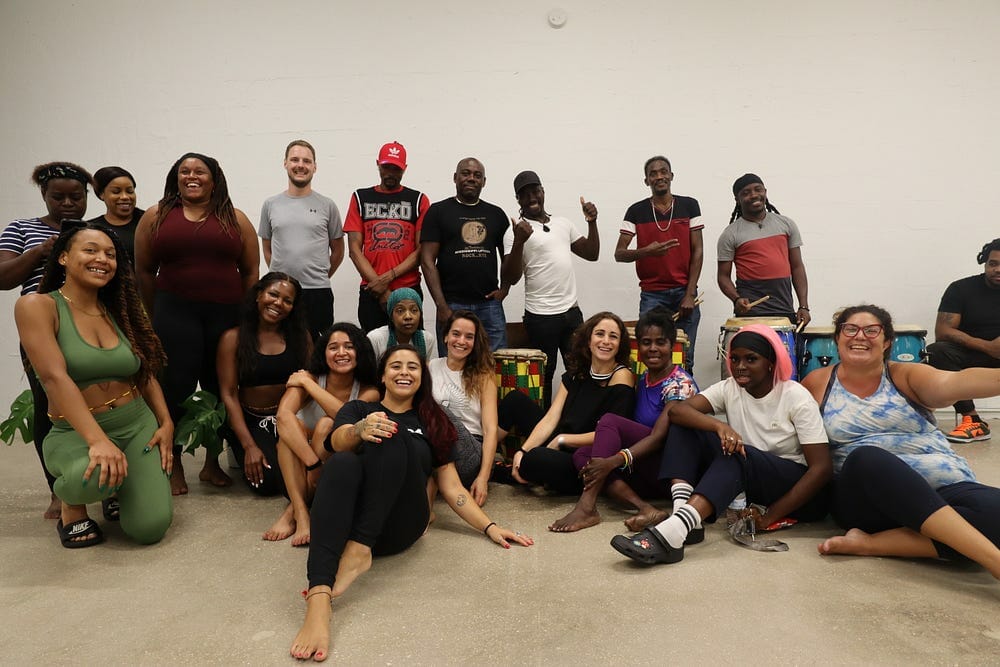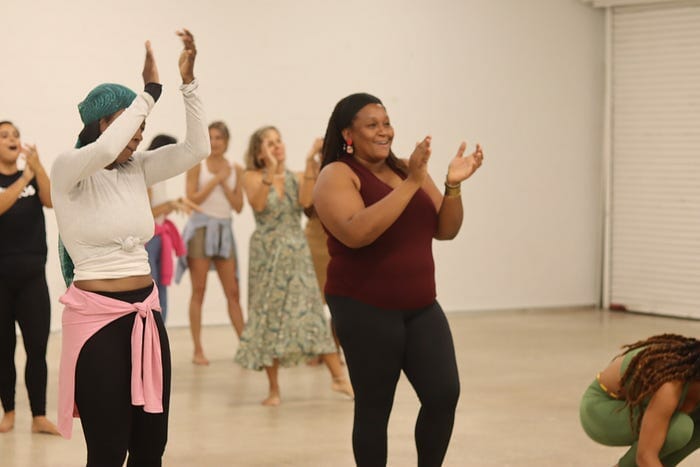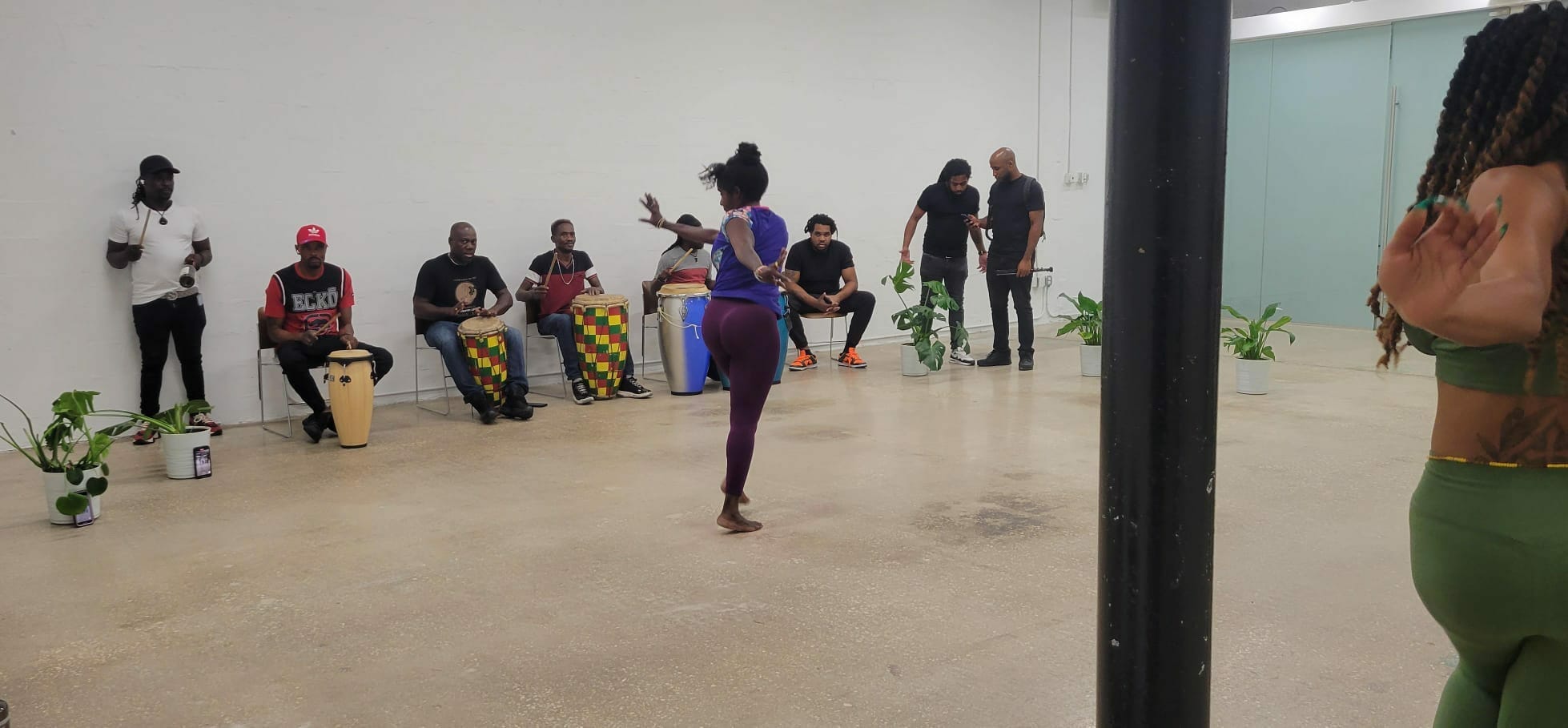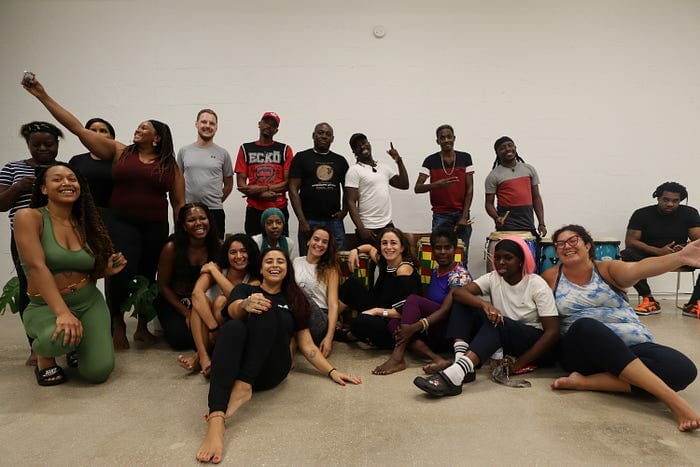Demonstrating the value of art and innovation for neighborhood revitalization in the heart of Jacksonville, FL
Phoenix Arts & Innovation District is a pioneering organization dedicated to the practices of creative placemaking, regenerative development, and adaptive reuse of commercial real estate. We are passionate about transforming spaces into vibrant, sustainable, and inclusive environments that foster community and creativity.
PROJECT UPDATES
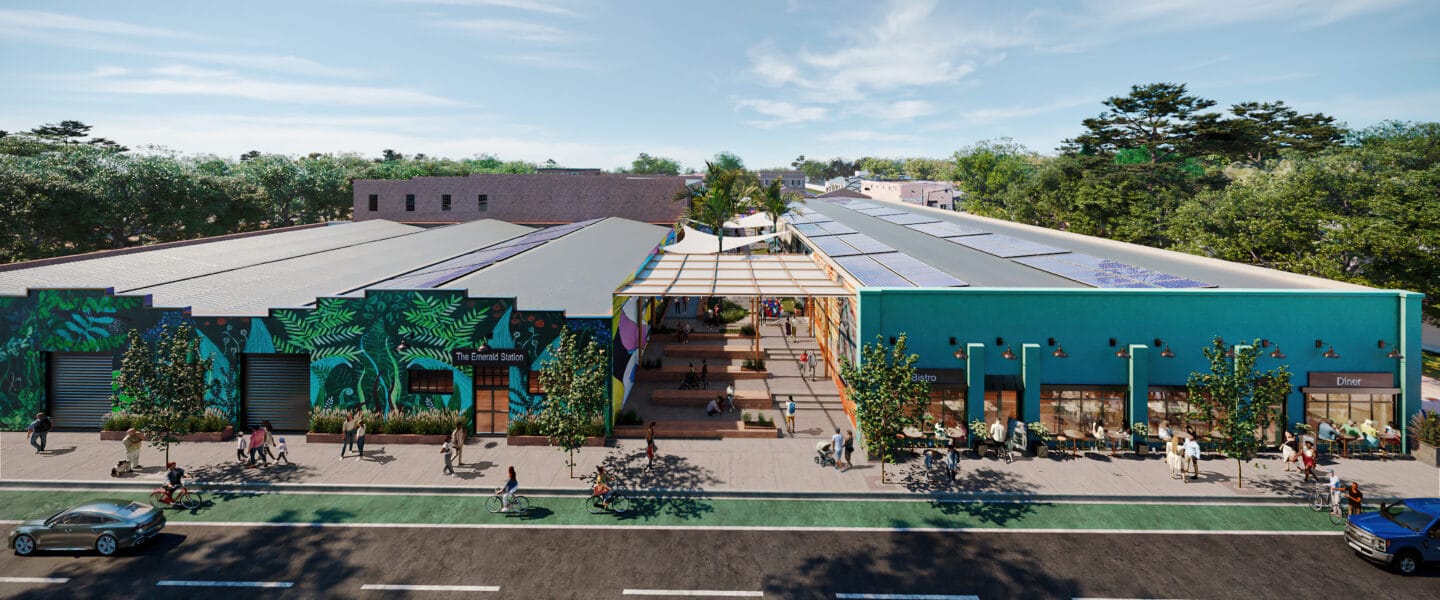
Last week our Director of Community Engagement, Emily Moody and our Land Use attorney from Rogers Towers, Emily Pierce, successfully went in front of the City Planning Commission for unanimous approval of our PUD (Planned Unit Development) for the rezoning of our full 8.3 acre district. The final City Council vote will happen on June 18th. We have been diligently meeting with each and every council member on this and have been receiving positive feedback and support.
EMERALD STATION
It’s almost time to start hard hat tours for the Emerald Station! The 100 year old Emerald Station building houses a mix of 25 creative office spaces, a community gathering space and a 500 person event venue. Our team is on track to open in early Fall 2024 and is pre-booking both the offices and event venue now. This will become the creative and innovative HUB of the district with The Emerald Trail passing directly behind, offering convenient and accessible public transportation to and from the Arts & Innovation District including a small business incubator & accelerator program powered by Future of Cities | PHXJAX.
EMERALD TRAIL | “MILESTONE MOMENTS”
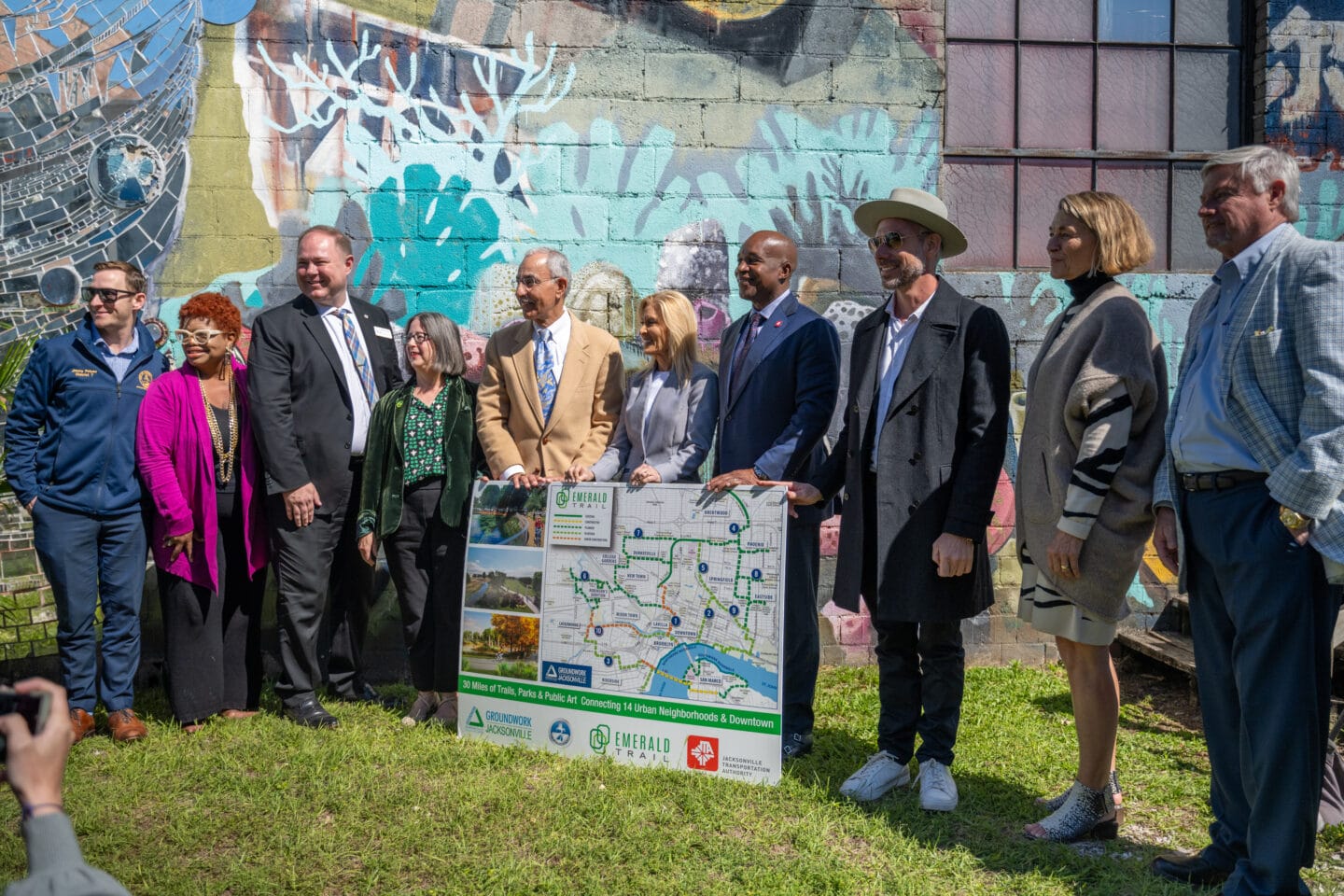
“The City of Jacksonville, Groundwork Jacksonville and the Jacksonville Transportation Authority (JTA) are celebrating a ‘major victory’ in their commitment to delivering the Emerald Trail to the Jacksonville community.”
PHXJAX in the Press | Upcoming Events | Internship Opportunities
Interested in building with us? Email info@phxjax.com for more info.
Podcast with Dr. Weiselande “Yanui” Cesar of Tradiyson Lakou Lakay Dance & Alexandra J Tohme, Future of Cities
by Alexandra J Tohme
The water movement of our bodies — as we express it in the dance — is reflective of the water on the journey from homeland to refuge — represents the trauma experienced in that journey — and also, leads us to healing, as water is life.
This is one of the essences of Haitian Folkloric Dance, rooted in the West African traditions from the ancient empires of Dahomey, Oyó, and Kingdom of Kongo (modern day Bénin, Nigeria, Congo and Angola.)
On a Wednesday evening, colleagues at the Future of Cities Climate + Innovation HUB, with Haitian neighbors, women and non-Haitian Miami folks, came together to share this dance form and were encouraged to fully release ourselves in the dramatic movements: from feeding-the-earth hands and sweep-floor arm gestures, to warrior leaps and jumps, to throws of celebration and prayer to the moons. Reverberations boomed through the room with six live conga drummers igniting our movement.
Culture is at the heart of regenerative placemaking — to deeply engage in “place” and co-create experiences and projects that uplift and empower communities, attract impact investment, and regenerate the natural environment.

Dr. Weiselande “Yanui” Cesar, who completed her PhD in human services & public health, explains that Haitian Folkloric Dance first sets itself apart with live drumming, and begins with an understanding within yourself of the struggles that can be released and let go of — and joy takes over.
It is precisely this dance form that Yanui harnessed when deciding to work with children with disabilities, upon founding her non-profit Tradiyson Lakou Lakay, loosely translated into “hometown traditions.” “Sometimes in order to serve those in need” she told us, “ you must tap into your own skill and passion.” That is what she’s done with folkloric dance. To reach and engage these children, and give them expression and outlet from societal barriers, she catalyzed this unique art form that is as much spiritual health as it is mental and physical. This proved to be well received by the children facing the daily issues and stigmatizations from their community — it was the parents who were more resistant at first to accept it. She said that some members of the Haitian community were not too thrilled to see representations of their more traditional culture while trying to assimilate into a new society and modern country. Later, upon seeing their children perform with such joy, their mindset changed.
Unfortunately — these are not feelings unique to Haitian but rather many immigrant societies that feel a pressure to negate their homeland cultures, in order to survive and succeed. But is that true, or necessary?
We at Future of Cities believe in “community ● nature ● culture” as the keys to successful and equitable economic growth and as the vanguard of development. “Regenerative placemaking” involves looking at the vast and wonderful opportunities within local communities, natural ecosystems, and cultural vibrancy that unlock economic empowerment. Tradiyson Lakou Lakay is an excellent example of that — providing jobs to drummers and dancers and integrating into local schools to fill the educational gap for children with special needs. Beyond what is in front of a developer, regenerative placemaking encourages urban practitioners to look for the lesser known or “unseen” treasures; and offering a hand-up, not a hand-out, is exactly what is needed today. All stakeholders would be set to benefit, a win-win-win.
Oba, oba lémiye
Sa nou te pédi a se li nape chéche
Oba, oba lémiye
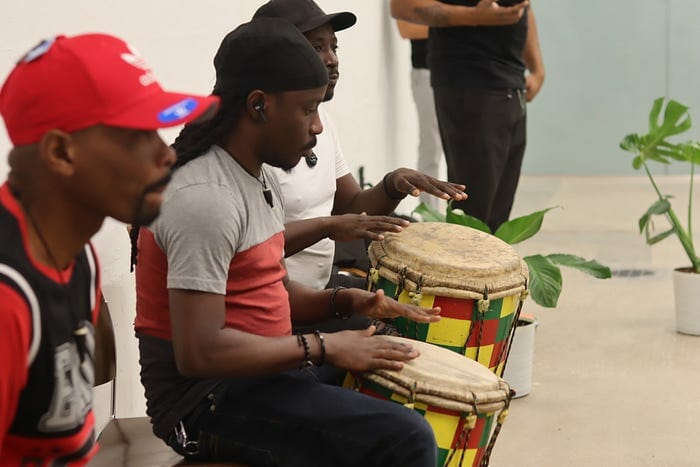
Back at our dance class event at the Climate + Innovation HUB, some twenty women of various backgrounds, American, Haitian, Latina, Arab, sit in a circle singing those poems and drinking fresh juices catered by the local family Haitian restaurant Cecibon, while a local videographer captures the scene. Circular economy can be achieved in every effort. Each time we put together an event or activity, we make sure to source from small local businesses. From the videographer, photographer, DJ, food caterers, and more, we focus on supporting local economic growth and jobs.
The twenty women sat and sipped juices and repeated those poetic songs together in celebration, laughing and sharing a tradition dating back four centuries.
While embracing heritage, we also recognize the importance of modernity. “Assimilation is critical, without losing our identity” emphasizes Dr. Cesar. It is empowering to learn new languages, technical skills, study in higher education — and connect with people of all backgrounds — that is the magic and beauty of diverse cities. Opportunities can be created for children and youth to thrive by mixing the old and the new. As Future of Cities continues our programs and efforts, it is resilient stories like Yanui’s — of overcoming struggle to celebration — that we will continue to share with the world as we co-create our common future on this planet.
